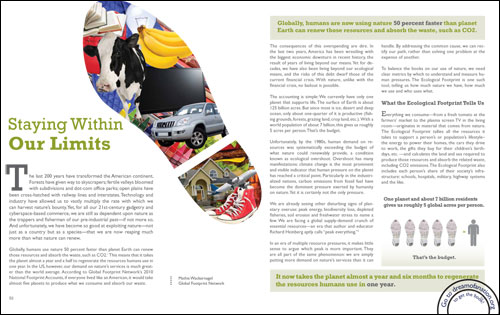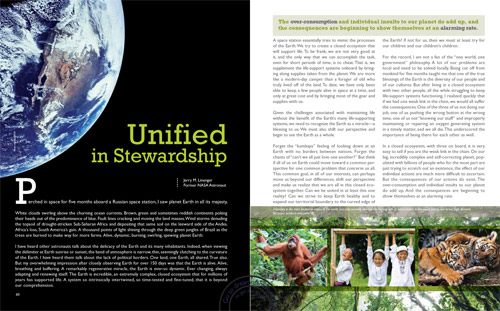Living Within Limits
No matter what, we only have one Earth to live on. There is a finite limit on the amount of productivity our land and water supplies can support, as well as a limit on the amount of carbon our trees and atmosphere can absorb. Currently as a planet we are exceeding these limits by almost 50 percent, and as a country we are using Earth’s resources 4 times faster than the planet can produce them and absorb the waste. Fortunately, now that we know the severity of our overshoot, we can begin scaling back towards sustainability.
Advancing the Science of Sustainability
 The Global Footprint Network’s programs are designed to influence decision makers at all levels of society and to create a critical mass of powerful institutions using the Footprint to put an end to ecological overshoot and get our economies back into balance. Learn more.
The Global Footprint Network’s programs are designed to influence decision makers at all levels of society and to create a critical mass of powerful institutions using the Footprint to put an end to ecological overshoot and get our economies back into balance. Learn more.Unified in Stewardship
 Dr. Jerry M. Linenger is a Naval Academy graduate holding a two doctorate degrees. In his mission on Mir, he logged 50 million miles in more than 2,000 orbits of Earth at 18,000 miles per hour. He was the first American to undock from the space station in Soyuz spacecraft and the first American to perform a spacewalk outside a foreign spacecraft.
Dr. Jerry M. Linenger is a Naval Academy graduate holding a two doctorate degrees. In his mission on Mir, he logged 50 million miles in more than 2,000 orbits of Earth at 18,000 miles per hour. He was the first American to undock from the space station in Soyuz spacecraft and the first American to perform a spacewalk outside a foreign spacecraft.
Read the Global Footprint Network essay: "Staying Within Our Limits"

Read Jerry M. Linenger's essay, "Unified in Stewardship"

Endnotes & References